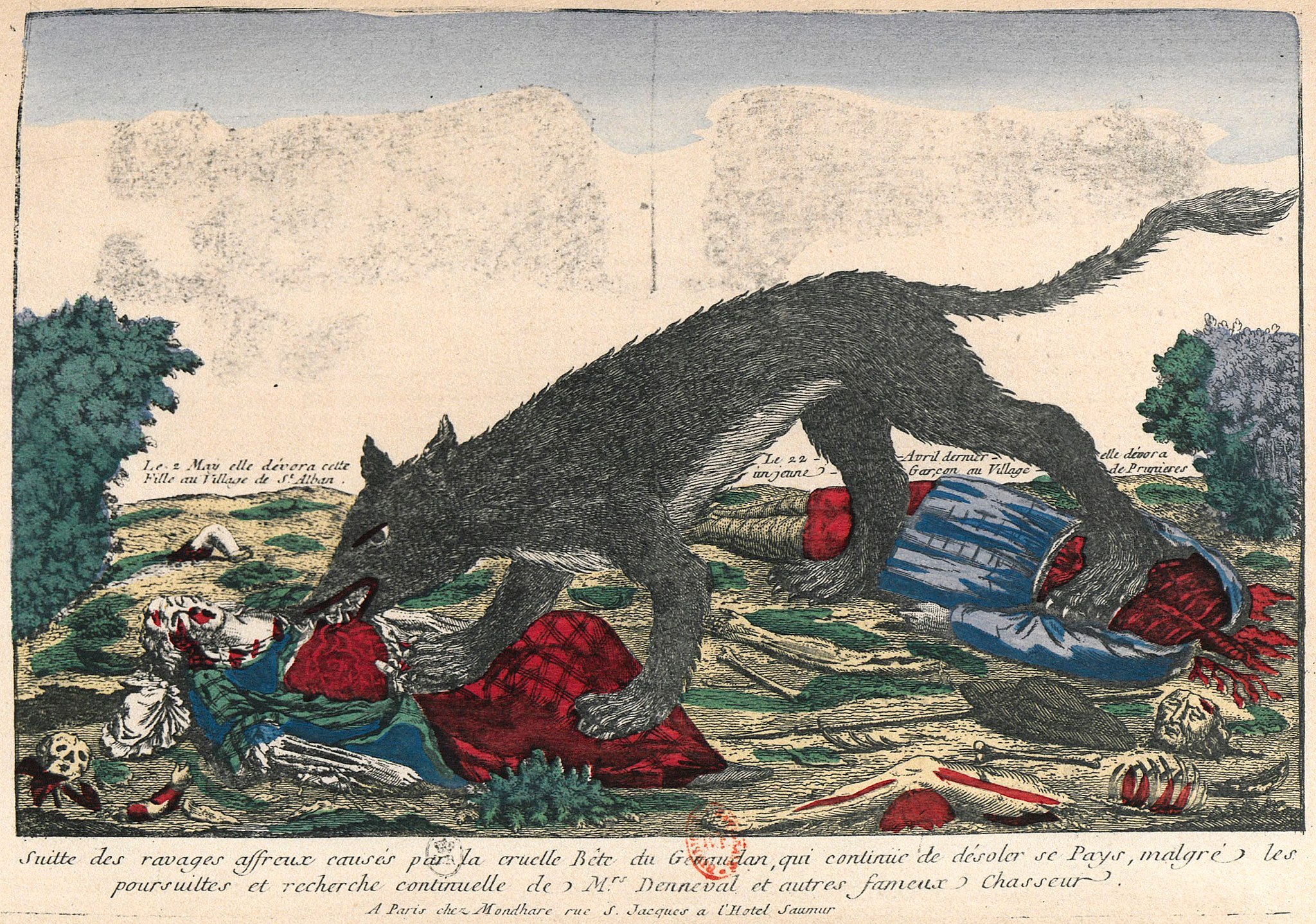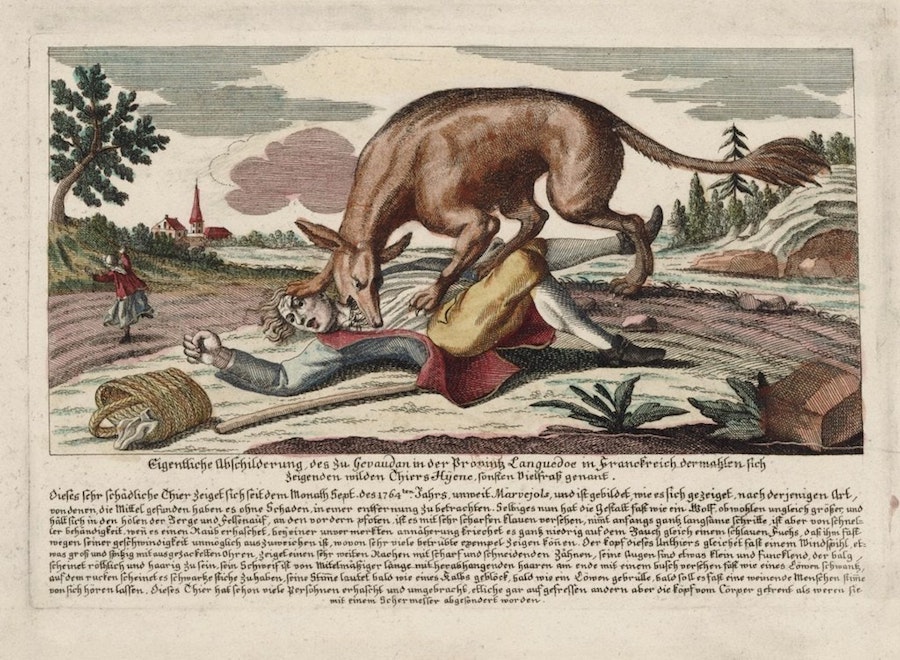
If you’ve delved into the world of French culture over the past few decades, you might have come across the card game Les Loups-garous de Thiercelieux. Translated as The Werewolves of Millers Hollow, this game immerses players in the roles of hunters, thieves, seers, and various rural villagers in a bygone era. However, by nightfall, some players transform into werewolves, putting the rest of the village at risk of being devoured. Though werewolves are purely mythical creatures, they have a fascinating presence in French popular culture. This fascination dates back to the French Werewolf Epidemic, a period that marked French folklore.

During the 1760s, a remote region in south-central France known as the Gévaudan (now part of the Lozère department) witnessed a series of killings. The perpetrator was believed to be a massive animal, simply referred to as ‘the Beast.’ However, as the legend of the Beast grew, so did the complexity of the stories surrounding it.
In contemporary press reports, speculations about the Beast’s gruesome tactics, such as decapitation and blood-drinking, were rampant. Artists had a field day depicting the Beast, whose monstrous appearance was described as utterly unbelievable.

By the winter of 1764–65, the attacks had escalated to a national crisis, prompting King Louis XV to offer a reward equivalent to a year’s worth of earnings to anyone who could eliminate the threat. In a dramatic turn of events, a lieutenant named François Antoine took down the enormous ‘Wolf of Chazes,’ which was then exhibited in Versailles. Despite this victory, the killings persisted until a local nobleman organized a final hunt, resulting in the slaying of the last Beast by hunter Jean Chastel in June 1767.

Post-mortem examinations revealed that the Beast’s stomach contained human remains, indicating its gruesome nature. It was confirmed that this creature was responsible for 95% of the attacks that occurred between 1764 and 1767. Various theories about the identity of the creature, ranging from a rabid wolf to a hyena or even a lion, continue to circulate. While the fantastical tales of the Beast may have faded into myth, they have left a lasting impact on literature, film, television, and gaming. The legacy of the French Werewolf Epidemic lives on, reminding us that the allure of these mythical creatures never truly dies.
Related content:
The Strange Dancing Plague of 1518: When Hundreds of People in France Could Not Stop Dancing for Months
The Sights & Sounds of 18th Century Paris Get Recreated with 3D Audio and Animation
A 1665 Advertisement Promises a “Famous and Effectual” Cure for the Great Plague
How the Year 2440 Was Imagined in a 1771 French Sci-Fi Novel
John Steinbeck Wrote a Werewolf Novel, and His Estate Won’t Let the World Read It: The Story of Murder at Full Moon



